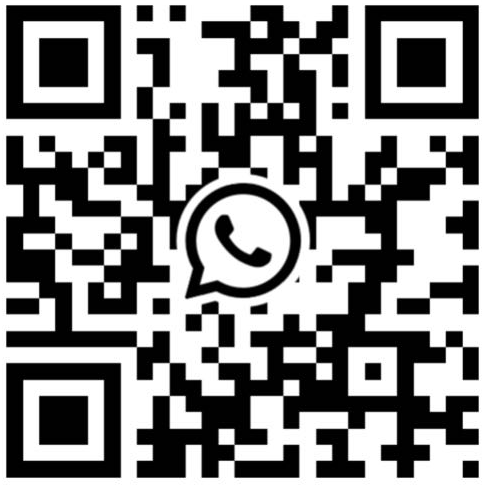Connector Solutions Simplify Design of Wearable Devices
Wearable devices' design often encounters a challenge: lacking ample space on PCBs for additional hardware that could enhance device functionality. Hybrid connectors have emerged as an effective solution to this problem.
Modern consumers seek wearable electronics that are not just stylish and comfortable, but also boast dependable performance and extended battery life. Yet, the compact nature of wearable devices poses a problem—it restricts the PCB area necessary for integrating and connecting components such as display modules, touch panels, microprocessors, and batteries. The connectors used in wearables are subject to limitations based on their shape and functionality. While flip lock ZIF and miniature BtB connectors have traditionally been favorites for wearable tech, manufacturers are now on the lookout for new connectors to keep up with the ongoing trend of miniaturization and the demand for enhanced functionality.
Different Connector Technologies
To date, wearable device designs that connect boards via flex have predominantly used two types of connectors, each with its unique pros and cons.
1. Flip lock ZIF connectors enable insertion of the flex with one hand, while the other hand flips the actuator to secure the connection. Available in front and back flip lock styles, these connectors simplify assembly relative to slide lock ZIFs. Despite a higher risk of actuator damage, they offer strong retention forces and provide horizontal mating with more size and pitch options. They are optimized for mobile use, but the need for two hands is a downside.
2. BtB connectors are two-part systems that allow easy, one-handed mating by guiding the plug into the receptacle and pushing down. These connectors deliver simple assembly, solid retention forces, and a variety of sizes and pitches. While they support only vertical mating, they are widely favored in mobile devices where vertical access is feasible.

Design Challenges
Escalating the complexity of wearable devices brings the challenge of balancing space constraints with performance and assembly considerations.
Designers must weigh electrical and mechanical considerations, including operational and mating capabilities. Placing multiple components on a PCB might affect the assembly sequence or necessitate mating in tight spots due to layering flexes and connectors.
Prior approaches, such as stacked boards or encapsulated modular systems, were deployed to enhance functionality in space-limited designs. But today's connected wearables have shrunk further, not leaving enough room for vertical mating of board-to-flex connectors or even for manually closing ZIF flex connector actuators. Vertical stacking can also complicate assembly.
Connected wearable devices, both consumer and medical, increasingly demand higher-speed communication and data processing, necessitating improved EMI shielding. Connectors that support rapid charging, including wireless options, are also sought after.
Wearable tech operates in demanding environments. Waterproof IP67-rated connectors provide robust protection. Moreover, these devices often endure drops, impacts, and vibrations. Resilient, rugged mating connections are essential to withstand these conditions without accidentally coming undone. Connectors that maintain a strong hold on the flex, while minimizing space for manual mating, can inject added design flexibility.
Additional considerations include preventing actuator damage (a typical issue with ZIF connectors), reducing cycle times for mating, and accommodating robotic assembly.
Hybrid Connector Solutions
Hybrid connectors are key in enabling communication and power transfer among different components by combining signal and power into one multifunctional connector. This allows for more features in wearable designs without compromising on size or functionality.
Wearable devices often consist of a myriad of components requiring distinct connections—power, data, and signal. Hybrid board-to-board connectors consolidate these into a single connector, conserving PCB space and streamlining design. A shielded housing caters to high-speed transmission and noise prevention.
Using separate connectors for each connection type can create a complex tangle of cables and connectors. Hybrid connectors simplify manufacturing and assembly by reducing the number of connectors to be soldered or attached to the PCB, enhancing assembly speed and potentially cutting costs.
Wearable devices need to interface with other devices like smartphones or computers. Hybrid connectors can incorporate standard interfaces like USB or HDMI, ensuring seamless interaction and compatibility. For instance, the micro BM29 Series hybrid BtB connector supports USB4 Gen2 (10 Gb/s) transmission.
Hirose Electric is among the few companies developing innovative multifunctional connectors. With a 0.35mm pitch, 0.6 mm height and a width of 1.5 mm, BM29 Series is the world’s smallest board-to-board connector.
Hybrid connectors can also be custom-designed to meet specific requirements of a wearable device, considering aspects like impedance matching, signal integrity, and power distribution.
Benefits of Hybrid Connectors
- Multifunctionality and space efficiency
- Flexible design possibilities
- Simplified interconnections
- Dependable and durable
- Swift and easy assembly processes
- Widespread compatibility
- Ability to be customized
- Effective power management
One-action ZIF connectors facilitate a one-handed mating process, retaining the positive aspects of actuator-style ZIF connectors, such as increased retention force and the option to unmate using the actuator. One-action ZIF-style flex connectors permit flex insertion without actuation engagement, yet ensure flex retention.
Hirose’s One Action FH design offers low insertion with high retention force.
Flip lock ZIF connectors can suffer from actuator damage due to user error during mating. The One Action actuator is inherently closed, reducing transport damage risk and lowering user damage likelihood.
One Action connectors, such as the FH Series, offer simplified mating in tight designs. Contactless mating in confined spaces is also possible with the One Action, which significantly accelerates the mating process, taking it from around 3 seconds to less than 1 second—crucially saving time and money in high volume production. To unmate, the actuator can be opened from the back to release the flex with zero retention force.
The contactless mating potential of One Action connectors makes them suitable for robotic assembly, where robots can insert the flex without the need for human intervention.
Benefits of One Action Connectors
- Streamlined assembly
- Horizontal mating capability
- Strong retention force with side hooks
- Actuator-free mating
- Reduced risk of premating damage
- Compact, low-profile silhouette

With a 0.25mm pitch, 0.5 mm height, and a width of 3.15 mm, the space-saving FH64MA Series is the world’s lowest-profile ZIF connector
Ultra-small, low-profile connectors with high-speed transmission capabilities dramatically enhance wearable device design flexibility. Emerging connector technologies like One-action ZIF and hybrid BtB connectors are key to efficient space usage, simplified assembly, resilience, and improved performance of wearable devices.
Connector Solutions Simplify Design of Wearable Devices
The rapid advancement of wearable technology has led to a growing demand for compact, reliable, and user-friendly connectors that can meet the unique requirements of these devices.
BonChip Electronics, a trusted distributor of a wide range of connector solutions, offers a comprehensive portfolio of products from leading manufacturers to support the wearable device market. Our experienced engineers can help you choose the right connectors for your application and provide expert technical support.
Key Considerations for Wearable Device Connectors:
- Size and Weight:
- Wearable devices are often small and lightweight, so connectors must be miniaturized to match the overall design.
- Durability:
- Wearables are exposed to various environmental conditions, so connectors must be rugged and resistant to shock, vibration, and moisture.
- Reliability:
- Wearables are often used in mission-critical applications, so connectors must be reliable and have a long lifespan.
- Ease of Use:
- Wearables are often used by people with limited mobility, so connectors must be easy to connect and disconnect.
Types of Connectors for Wearable Devices:
- Micro USB:
- A popular choice for wearable devices due to its small size and wide availability.
- USB Type-C:
- A newer and more versatile connector that offers faster data transfer speeds and reversible mating.
- Magnetic Connectors:
- Provide a secure and easy-to-use connection for wearable devices.
- Wireless Connectors:
- Eliminate the need for physical connectors and offer greater flexibility and convenience.
BonChip Electronics can help you choose the right connector for your wearable device application. We offer a wide range of products from leading manufacturers and have a team of experienced engineers who can provide expert technical support.
Contact BonChip Electronics today to learn more about our connector solutions for wearable devices.







